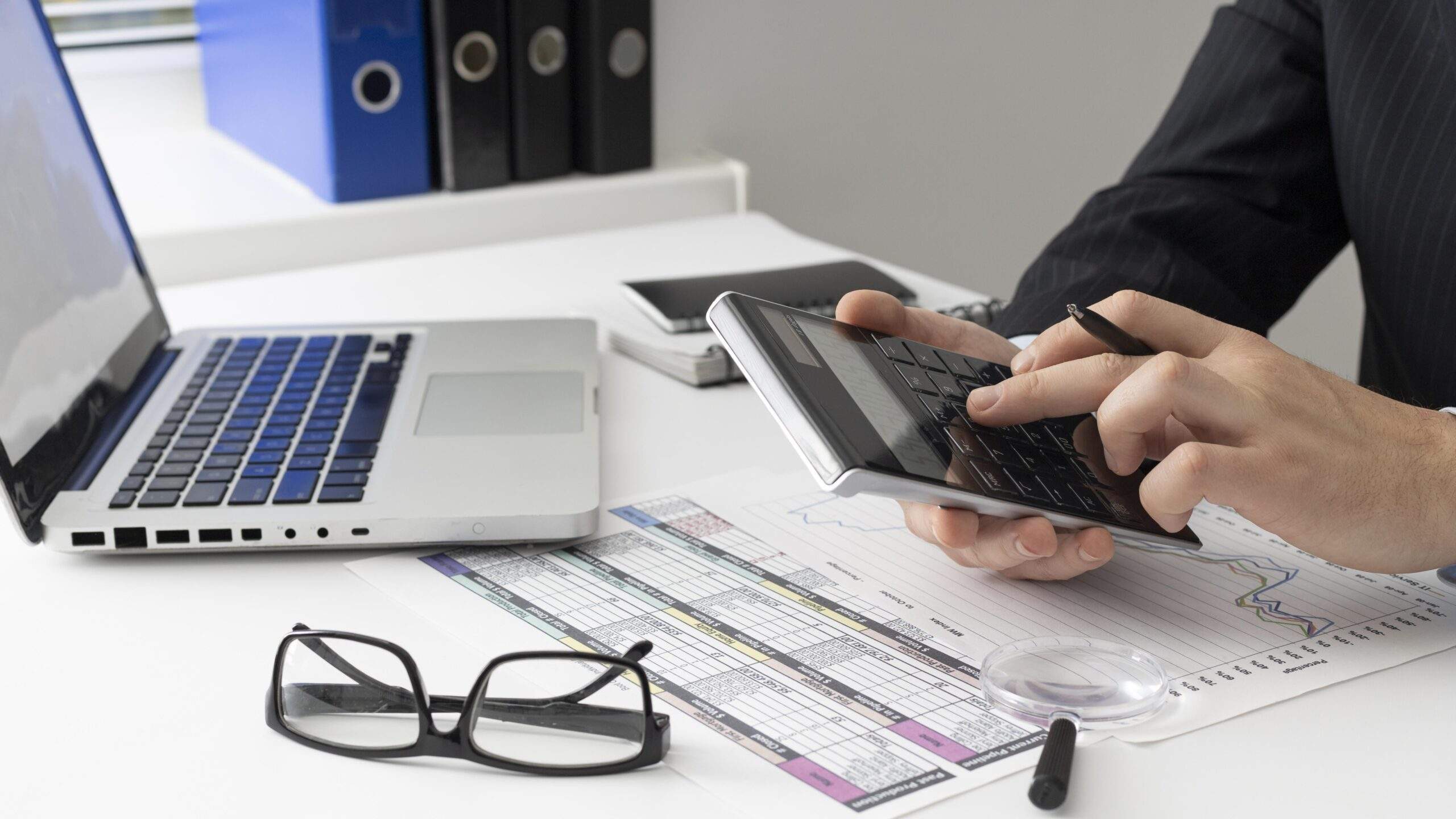
Five Senses & Hyper-Automation
Hyper-Automation is the automation of activities that were done by humans and exactly the way we would expect humans to do it. When we look at automation of activities it is primarily driven by the 5 human senses and humans have tried to mimic those in the real world and to elevate human life.
From driverless cars to smart virtual assistants, from biometric sensors to connected devices, from smart cities to connected homes; the use of technology has become widespread. Many activities that we used to do physically are already automated, it has become a new norm for all of us and the future would be even more interesting with some amazing technologies shaping our lives in the coming years.
Similarly Automation has become one of the biggest needs for enterprises to improve efficiency, save cost, and also to speed up their operations. Automation empowers organizations by helping them embrace these new technologies with ease and reap the benefits of the technology through different platforms which gives that edge to the enterprises.

Hyper Intelligence
Let’s try to draw an analogy between our senses and Automation :
- Sense of Touch: Touch refers to the human ability to use our fingers/surface of the skin in ways that allow us to identify our surroundings. In organizations, there are a lot and lots of people who are actually doing touch-based activities that help them to make appropriate decisions. For example, Invoice Data-Entry is such a process, wherein an organization that receives vendors’ invoices on the generation of purchase orders while purchasing/ordering some equipment/service. These invoices are actually punched into Accounting/ERP systems by individuals in the accounts department. This task is time-consuming, prone to manual errors, and a cumbersome task to deal with.
Technology like Intelligent information management has been there in this segment, a few examples of those would be Accounts Payable Automation, Accounts Receivable Automation, etc. These technologies help to make the whole process automated by fetching documents from multiple sources, sorting them, and extracting details of required fields; these details are then reconciled/matched with other documents and finally punched into Accounting/ERP systems without much human intervention except in the case of exceptions.
- Sense of Hearing: Sense of Hearing helps us to communicate with our surroundings by experiencing the vibrations created by sound. Let’s take an example, we are all familiar with Call centers, you need to call the helpline number of a firm, in case you need to reach out to them. Someone would pick up the call and answer your queries.
Now, this physical process is automated using Chatbots, IVRs, etc. So as soon as you open the website a chatbot appears welcoming you and straightaway asking you for your queries, you just need to type your question, and most of the time you get responses from the chatbot itself, in a faster and aligned response equivalent to your expectation.
- Sense of Sight: One of the most powerful senses of humans that makes us see the world as it is, guides us and helps us in clear processing and understanding of things around us through proper visualization and interpretation.
Let’s understand the technology equivalent for the same:
A. OCR(Optical Character Recognition)
OCR is an older technology that is in existence for the past but over time has been advanced using modern technologies like artificial intelligence, machine learning, etc to enhance the processing capability similar to lenses and spectacles we use to improve our eye’s visibility.
From the organization’s perspective, if we talk about document processing of invoices, usually the accounting personnel looks at the invoice, reads it and interprets the data, and then punches it into the ERP system. This process of manual processing under workload conditions is prone to issues like manual typing errors, skipping of fields, misplacing of documents, wrong entries,etc
This has been replaced with the OCR technology which actually scans through the documents and extracts the information corresponding to different fields and accurately copies the data to the ERP/Accounting system without any errors and that also in a quick and efficient manner.
B. Face Detection:
This is one of the peculiar features of our eyes which helps us in recognizing individuals, places, and things to interpret, visualize and process information related to them.
Similarly, in the organizations this activity was usually done by the security guard standing at a gate where the person is actually verifying his/her ID card, verifying the person who’s actually getting into a building for security checks.
This manual process now gets replaced by the technology of Face Detection & Recognition, the software recognizes faces and then lets the individual in through the security checks. This technology is employed for multiple scenarios like attendance management, fraud management in insurance organizations, and video KYC in Banking & Insurance, surveillance & threat management at airports and other such locations, etc.
- Sense of Speech:
The power to converse between individuals is also a key differentiator between humans and machines that helps them to express their feelings, share their thoughts and speak out their views.
We are all aware of modern technologies which all of us might have used or encountered like Alexa, Siri, Google Home, etc. in our day-to-day lives. Now we believe that in the future this technology is going to get into our professional lives as well where most of the operations could be executed using the power of speech, where instructions taken by machines will help us get things done.
- Sense of Smell :
The sense of smell is another important sense that humans possess to help us detect desirable foods, hazards, etc in our surroundings.
On the technology side, there are bots that are built to smell odors. For example, E-nose, these bots are used in very hazardous environments like chemical factories to detect the smell and identify leakages, etc,. These can also be employed at places where human lives cannot be risked and after-effects of the leak, explosion, bombing, etc have to be sensed for the viability of existence.
So in a nutshell, for activities that are manual and repetitive in nature, Hyper-automation can be used to bridge the gap to help grow in a more efficient and faster manner. Technology and its innovation are for the empowerment of humans and not for their replacement, they will help us to excel, innovate and focus on more strategic activities.
For more insights on how to ” Enable the Digital Enterprise of the Future using Intelligent information management” view our webinar.

How to Manage Time, Instead of Time Managing Us !!! – Part 6
Welcome to Part 6 the last part of the six-part series on “How to Manage your Time, Instead of Time Managing Us “.
In the previous parts, we have explored how “Staying Healthy”, “Planning the Day”, “Managing the Daily Tasks”, Staying Motivated” & “Discipline” can help us in Manage our Time effectively. In this final part, let us all evaluate what worked and what didn’t for each one of us…..
6 . Checkpoint

How to Manage Time, Instead of Time Managing Us !!! – Part 5
Welcome to Part 5 of the six-part series on “How to Manage your Time, Instead of Time Managing Us “.
In the previous four parts, we have explored how “Staying Healthy”, “Planning the Day”, “Managing the Daily Tasks” & Staying Motivated” can help us in Managing our Time effectively. In Part-5, we will discuss about “Discipline”.
5 . Discipline
Self-discipline is an art of getting yourself to take actions irrespective of your mental state

How to Manage Time, Instead of Time Managing Us !!! – Part 4
Welcome to Part 4 of the six-part series on “How to Manage your Time, Instead of Time Managing Us “.
In Part 1 ,2 & 3, we have explored how “Staying Healthy”, “Planning the Day” & “Managing the Daily Tasks” helps us in Managing our valuable Time. In Part-4, let’s understand how “Staying Motivated“ is important
4. Staying Motivated
To be able to stick to our plan, it is important that we also stay motivated until the time the task is complete. Staying motivated need, a lot of work on self. We cannot depend on external factors to keep ourselves motivated and expect to be happy and motivated throughout. We have to have a very good self-control and a strong will power to be able to manage our motivation.

How to Manage Time, Instead of Time Managing Us !!! – Part 3
3. Managing the Daily Tasks
Once planning and prioritization is done, the next important activity is to make sure we are able to manage the tasks in the given timeline. Else, the entire planning effort goes waste.

How to Manage Time, Instead of Time Managing Us!!! – Part 2
Welcome to Part 2 of the six part series on “How to Manage your Time, Instead of Time Managing Us “.
In Part 1, we explored how “Staying Healthy” helps us in Managing our Time. In Part-2 , we will dig deep into “ Planning the Day”
2. Planning the Day
This is the most critical step to achieve your day’s goal. Planning has to be good to make sure we are satisfied with our accomplishments at the end of the day.

How to Manage Time, Instead of Time Managing Us !!!
Is there a magic potion for being productive, meeting deadlines, and delivering more than what is expected?

5M’s of Document Digitization
Documents are part of every organization in one or the other form and handling/processing them become a cumbersome task when they are in bulk and when there is a huge number of documents to be processed manually.
Usually, an organization encounters the following major problems while dealing with its documents:
1. Manual Errors
It is a common proverb that says “To err is to human”. Manual errors are a part of documents whether are missing document entries, misplacing documents, typing errors, or errors with digits in financial documents leading to losses. These result in rework to find and rectify the error caused and usually gets unnoticed due to the workload and is realized only when the error can’t be corrected. It is the most common problem encountered by staff members which is tiring, and time-consuming and is also responsible for about 62 percent of the cost being incurred by organizations for labor.
2. Managing Inefficiencies
Efficiency in simpler terms is a ratio between the output and input. To improve efficiencies organizations usually tend to decrease their input as much as possible to reap the maximum output. But in the case of documents the scenario is worse, due to the number of documents generated daily, it is not only time-consuming but also laborious to manage the efficiency.
Other than this the type of information to be used from structured or unstructured sources makes the process more complicated and adds delay and further decreases the efficiency.
3. Maintaining Audit Trail
Auditing is a process that helps in matching the to and from the movement of information in any kind of document. It is not as simpler as it seems in the previous sentence as it includes the individual matching the information on all the documents from where it has been used from. For example, in the case of Invoices- the manual invoice is to be matched with the Purchase Order (PO) and the Goods Receivable Note (GRN) to reconcile the entries and release the payments. But as the example states, the more the number of items in the invoice as well as the invoices generated/ received by any organization daily/weekly/monthly the job becomes more complicated, prone to errors and inaccuracies, and hard to deliver within the stipulated time.
4. Manual Data Entry
Data Entry is a kind of job wherein an individual manually sits and enters the information on the documents in paper format in the ERP or other financial documents of the organization so as to ease the processing. But since it is being entered manually field by field, item by item, etc. by the individual the chances of typing errors, fields being missed and entries in wrong fields are common. These account for about tons of information being approved by top authorities and consumes too much time as well to digitize the information on the paper prone to errors and decreased accuracy.
5. Meeting Deadlines
The documents usually in the form of invoices, contracts, bills, etc. are to be processed within a given time limit to be realized in the systems as well as for payments to be carried out. The increased workloads, busy schedules, and delays in approval leads to lost opportunities and tarnish the relationship between the stakeholders of the organization. Another challenge is the uneven workload and too much load during the last few days of the month-end or quarter-end or filing process.
Are you fed up with these M’s? Then it is time for your organization or business to consider automating the document digitization process to eliminate the errors, save time and improve your overall efficiency and accuracy.
For more information, contact us for a demo at info@AIQoD.com

Why Documentation in BFSI sector is not a challenge anymore?
Apart from government agencies, employees working in banks & other financial institutions have to adhere to the enormous amount of rules & regulations when it comes to managing information.
Information also includes the confidential data that is maintained on the bank’s servers, as well as documents that are submitted by customers & businesses that have some kind of working relationship with the bank.
Document ‘Identification’ & ‘Maintenance’ – A growing challenge for Banks & other Financial Institutions
As per a report, Identity of Client (bank accounts opened with names similar to other established business entities, false identification documents, etc.) is one of the most important factors that can make or break the reputation of a bank. Employees have to deal with a significant amount of paperwork, though financial institutions are trying their best in order to keep the costs of maintaining these paper documents under control. Take the case of maintaining the documents submitted by a new customer at the time of opening a new bank account. There is a significant amount of data from the account opening form that needs to be fed to the back-end system and any error caused by the manual entry can result in loss of business, indirectly impacting the ‘client satisfaction index’. As banks have to adhere to a lot of regulatory and compliance standards, maintaining documentation for compliance is also a big task. Irrespective of the nature of the documents e.g. account opening forms, loan processing forms, KYC (Know Your Customer), mortgage forms, etc.; they need to be maintained in a manner where less effort is spent on ‘Document Identification’. If the bank falters in any of these tasks, it would hamper the productivity of the staff.
Document ‘Standards’ & ‘Retrieval’: Unstructured & non-uniform formats followed by different departments impacting ‘customer experience’
Irrespective of the size of the bank, the overall structure of any banking organization is considered to be highly complex as there are a number of departments providing different services to their esteemed customers. Hence, each department might be having its own format of document descriptions, document folder structure, metadata, etc. which makes the task of accessing/editing/searching ‘common’ documents across departments a tedious task. Inadequate content management can make retrieval of important documents highly complex, thereby impacting the pace at which the other follow-on activities are executed. These delays can result in a sub-optimal customer experience which can negatively impact the bank’s brand & business. The tasks like document processing, extracting customer information from the form, matching customer signature to prevent frauds, etc. are mundane in nature, yet very critical in nature; so they need to be performed with utmost precision. However, due to the mundane nature of these tasks, they are more prone to manual errors. Though the problems mentioned so far are different in nature, there is a common pattern in each of them – bank representatives have to review a number of documents and in most scenarios, he/she has to manually enter the details at the back-end. How can banks get out of this ‘document chaos’ and keep their employees motivated to provide excellent services to their customers?
Intelligent information Management (IIM) – Solving the ‘documentation crisis’ faced by the BFSI sector
Intelligent information Management (IIM) platform from AIQoD can be instrumental in automating critical activities mentioned below
- Capture – Gather input from tools like scanners, ERP, spreadsheets, etc.
- Processing – Match, structure, and figure out ‘any’ discrepancy in the data
- Routing – Insertion of data in the ERP or any other backend/accounting system
- Retrieval – Retrieve or query data from ERP or any other backend/accounting system
The platform leverages technologies like Machine Learning (ML), Artificial Intelligence (AI), Image Processing, etc. in order to bring intelligence to a routine, yet critical job like ‘Documentation’. Highly accurate Handwriting Recognition feature in the platform can be used for signature verification. Optical Character Recognition (OCR) feature in cognizance with mobile capture & recognition feature identifies and extracts text from documents and images, thereby eliminating chances of error in processing and management. Irrespective of the department, employees within the bank can use a common automated workflow for input, indexing, search, and processing of documents so that they can focus on activities that require creative intelligence, rather than spending their time in scouting for documents. Incorporation of IIM in a task like ‘documentation’ can have far-fetched benefits, some of which are listed below
- Centralized Access to documents
- Faster retrieval & processing of documents
- Compliance with the required financial regulations
- Enhanced accuracy of documents
- Boost in employee’s morale and productivity
Conclusion
RPA for ‘documentation identification & maintenance’ for BFSI sector has multi-fold benefits and can help in providing enhanced customer experience, engaging employees with important tasks and saving overhead costs.

